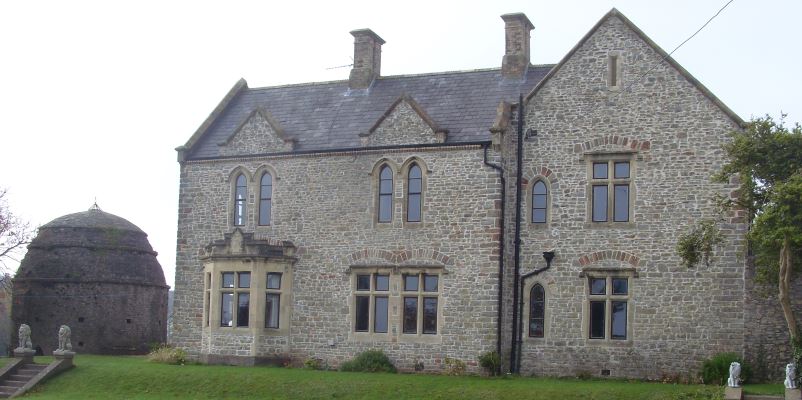
If you assumed Barry was all about the docks then we might be able to surprise you.
Amongst other events we can tie The Court into we have the search for the North West passage via the Hudson Bay, the trials of Mary Queen of Scots, Sir Walter Raleigh and Guy Fawkes, and also the struggles of Owain Glyndwr.
For more click here.
The building dates from the 13th Century. That makes it approximately the age of Magna Carta and Tintern Abbey, older than Caerphilly Castle but a tad younger than Cardiff Castle. It may be slightly older than Barry Castle – but it is clearly in better condition.
For more click here.
For more click here.
You only have to enter the grounds, especially at night, to feel the presence of the spirits. There are many instances of noise and general disturbance not caused by the living.
For more click here.
Most people of a certain age know these premises as the former home of Drs Lennox. They lived at the premises for a very long time. It was towards the end of their occupation of The Court that digging began in the grounds in order to try to record what was on the site before the present rectory was built in about 1873.
The site was occupied from before 1200AD and some of the owners were more famous than others but they all add to the history of the site which in turn adds to the history of Barry, making it more colourful and interesting. However, not everything about The Court is good news. There has been tragedy associated with the site and let’s not forget that the reason it is known as The Court is that a medieval court house once stood in the grounds. More bad news for some!
The site was reputed to have been a monastery at a very early stage but the evidence does not support that. It was a manor house probably erected at this spot due to its strategic position, high up on a limestone outcrop overlooking the channel.
The house is now a listed building, grade 2: the dovecote is listed grade 1. Taken as a whole the site clearly has as much history as any other part of Barry including the old villages of Cadoxton, Highlight and Merthyr Dyfan. There are myths associated with the site including a belief that there is a secret tunnel from the site out to Sully and also that the site is haunted with various people reporting the sighting of spirits over a long period. The site being haunted is not so unbelievable when you look at the massacre that took place on the site in about 1400AD.
There is so much to share when it comes to the history of the site that it is difficult to know where to begin. We want to make the gardens (of which there are seven of different character) relevant to the site and accessible to others living in the town. We will want to encourage more visitors which is a reason for looking to have a business operating out of the site. There is a lot to be done to ensure the site is sufficiently interesting and safe.
When the gardens are developed we hope to be able to open them up for a number of days each year with local good causes becoming involved to increase interest and to help them raise funds. We will seek to keep records of the site in the office that is in development and for any artifacts and details of what is ‘below ground’. We are very grateful to Gareth Tyley for his hard work and determination in digging where he expected to find evidence of past buildings.